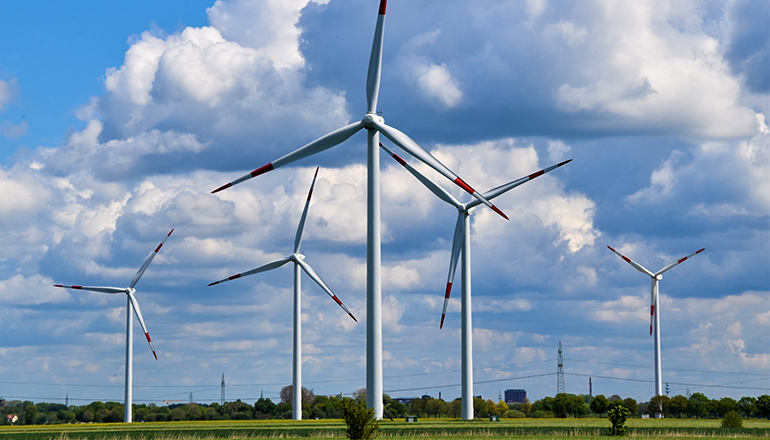With wind energy growing increasingly common and more wind turbines dotting the landscape – especially in northwest Missouri – the threat to eagles and other birds is an increasing concern to conservation organizations and others. Birds have been hurt and killed after encountering the massive blades and air currents of wind turbines.
The Missouri Department of Conservation (MDC) is partnering with Conservation Science Global, Inc. (CSG), and the Renewable Energy Wildlife Institute (REWI) on a research project in northwest Missouri to better understand interactions between bald eagles and wind turbines.
“As part of efforts to slow the rate of climate change and transition to a net-zero carbon economy, we expect to see an expansion of wind energy facilities across the country,” said REWI’s Senior Scientist Dr. Shilo Felton. “Important research like this, tracking eagles in Missouri, helps developers and agencies plan ahead and better manage renewable energy facilities to protect birds and other wildlife.”
The research will give scientists and others a better understanding of the collision risks of bald eagles with wind turbines.
“We need more species-specific information on how, when, where, and why bald eagles move across the landscape during each stage of their lives, and when, where, and why they may be at risk of negative interactions with wind energy facilities,” said CSG Executive Director Dr. Trish Miller, who is coordinating CSG’s involvement in the project.
The project focuses on eagles near the Atchison Renewable Energy Center in Atchison County and other wind-energy resources in northwest Missouri. The Energy Center is owned by Ameren Missouri. The research project is being funded by MDC as a result of a Public Service Commission settlement with Ameren on the Atchison Renewable Energy wind facility.
The multi-year project involves capturing four adult eagles that nest in the area and four immature eaglets from nests in the area. Researchers will fit the eagles with global positioning system (GPS) tags on their backs. The tags collect GPS data every five seconds and provide information on location, flight speed, altitude, and direction of movement.
The adult eagles are captured by a team of CSG biologists using bait on the ground and a remote-controlled hoop net. The GPS transmitters are then attached to the birds’ backs like a backpack and the eagles are released where captured. The biologists also perform a quick health assessment of the birds, take wing and other measurements, and fit the birds with numbered leg bands.
“Marking adult bald eagles in NW Missouri with GPS transmitters will not only help us understand their movements in relation to wind energy, but will also help us understand territory size, foraging behavior, and other pertinent life history traits of the expanding Midwest population of bald eagles,” said Wildlife Biologist and Lead Trapper Dr. Vince Slabe of CSG.
Tagging of the eaglets will occur in May 2023. CSG biologists will tag the immature eaglets by safely removing them from the nest and immediately returning them after tagging.
“This project has been an amazing opportunity to work alongside biologists and witness the process up close,” said Atchison County Conservation Agent Kyle Dick, who was part of the capturing process. “Definitely a highlight in my career.”
Agent Dick added that the project wouldn’t be possible without the support of the landowners that own property near these nest sites. “We are extremely thankful for their willingness to allow us access to their properties for trapping these eagles,” he said. “Atchison County has an amazing community and folks have gone above and beyond to welcome us and this project. We are very appreciative of them and their support.”
For more information on the ongoing project, contact MDC Resource Scientist Janet Haslerig at 573-751-4115 ext. 3198 or [email protected].
(Photo by Waldemar on Unsplash)


